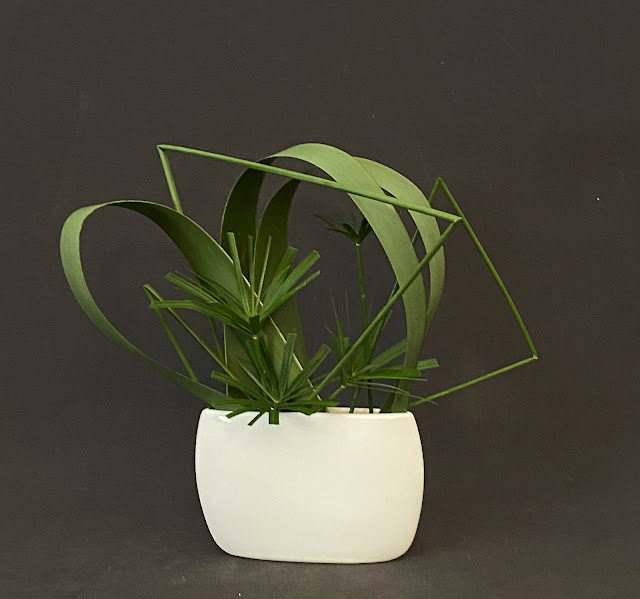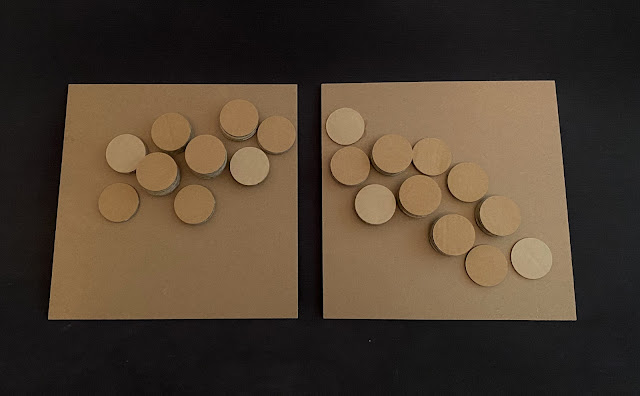Hello all,
The plans I had for our recent masterclass were thrown out when Vicky rang to say that she and her husband were pruning back their kiwi vine. So, I dropped everything and drove down to collect enough cuttings for everyone in the class. I gave each student a piece of vine, a stem of oriental lilies in bud and some leaves. They were to chose their own container.
Mine is the arrangement, above. I made it a few days after the class, which explains my flower being fully open, when the students' ones were only in bud.
I made a second arrangement with a small piece of vine and my one and only arum lily. The glass vase is particularly beautiful and the challenge was to place the materials so that the stems in the water would be concealed by the coloured parts of the vase.
Cymbie used two containers, in one of which she placed the kiwi vine (not easy to balance in such a small container) and an aspidistra leaf in the other. She cut and used the stems only of her other aspidistra leaves and, very wisely, left out the flowers.
Akemi chose a container with an intricate design which she repeated by tying the ends of the New Zealand flax leaves. She, then, worked the vine through and around the leaves and added the flower buds as the focal point
Lei placed her, two, strelitzia reginae leaves top to bottom and brought the vine around, thus creating space, behind which she placed the flower buds.
Jenny chose a tall vase for her rather large piece of vine. She had two monstera leaves but chose to use only one. The three flower buds completed the naturalistic arrangement.
Vicky, also, used a tall vase but she made a contemporary arrangement draping downwards. She trimmed the leaves of the umbrella grass and bent the stems directing them downwards and through the space created by the vine.
Lucy's piece of vine was more challenging because it was quite thick and, therefore, less malleable. She managed, however, to place it in a pleasing manner over a heavy container, then placed one of her two philodendron leaves and the flower buds quite high, making them the focal point.
In the entry of our house we have a narrow wall, on which I always have an arrangement. I call it my 'welcome arrangement'. I find photographing these arrangements particularly frustrating. The two story, front entry is made of glass and light is flooded through the entry space but this creates shadows. I play around with the various lights, including portable, modeling lights but I'm never satisfied.
Anyway, below is my current wall arrangement. I reused yellow dogwood (cornus sericea flaviramea), nandina domestica nana, queen's tears bromeliad and large New Zealand flax leaves. The photograph belies the size of the arrangement. It is, actually, 1.5 metres tall.
Emily

































